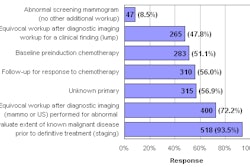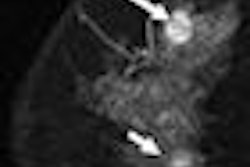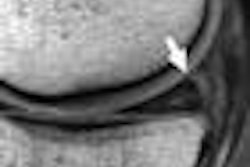A new study published in Radiology has found that hemodialysis helped prevent nephrogenic systemic fibrosis (NSF) in certain patients who received gadolinium-based contrast media during MRI studies.
Researchers at Weill Medical College of Cornell University and Columbia University's College of Physicians and Surgeons in New York City collaborated on the retrospective study, which analyzed NSF occurrences over 10 years (Radiology, September 2008, Vol. 248:3, pp. 807-816). Lead author on the study was Dr. Martin Prince of Weill.
The researchers found that hemodialysis helped prevent NSF in patients with an estimated glomerular filtration rate (eGFR) of less than 15 mL/min. Increased risk of NSF was associated with patients with an eGFR of less than 30 mL/min who received a high dose of gadolinium-based contrast media, and who also experienced acute renal failure, delayed hemodialysis after contrast agent injection, proinflammatory events, and hyperphosphatemia.
The group analyzed cases of biopsy-confirmed NSF and all patients who received a gadolinium-based contrast agent between January 1, 1997, and June 30, 2007. There were 31 biopsy-confirmed cases of NSF during those years at the two hospitals, with cases occurring in 10 male and 21 female patients between the ages of 13 to 82 years, with a mean age of 53 years. Researchers noted that the severity of NSF symptoms ranged from 16 cases of skin plaques without functional impairment to five patients with debilitating skin fibrosis with decreased mobility.
NSF patient data
Of those 31 patients, 15 patients received a high dose of gadolinium-based contrast for MR imaging before the onset of NSF symptoms. NSF symptoms developed between 18 and 102 days (with a mean of 58 days) after gadolinium-based contrast agent administration.
The study also noted that the "15 patients who received a diagnosis of NSF after gadolinium-based contrast agent administration included nine patients who underwent at least one hemodialysis treatment around the time of the MR examination and the subsequent NSF diagnosis; however, only one of these patients was in a chronic hemodialysis regimen at the time of gadolinium-based contrast agent administration."
The type of gadolinium-based contrast agent administered for each examination was determined from the MRI records and the hospitals' formulary and purchasing records. Of 83,121 patients reviewed, the study found "no significant differences in the incidence of NSF associated with high doses of gadodiamide, gadopentetate dimeglumine, gadoteridol, or gadobenate dimeglumine."
NSF incidence
The overall incidence of NSF after gadolinium-based contrast agent administration without screening for renal function were 0 of 74,124 patients with a standard gadolinium dose and 15 (0.17%) of 8,997 patients with the high dose. The incidence associated with the high dose increased to 0.4% in the patients who received hemodialysis and increased to 8.8% in patients who had an eGFR less than 15 mL/min but had not received hemodialysis treatment.
The NSF incidence among patients with acute renal failure who received a high dose when their creatinine level was increasing was 19% (11 of 58 patients) when hemodialysis was delayed for more than two days.
One study limitation researchers noted was that the patients "were considered to have developed NSF only if biopsy confirmation was obtained."
Although we are not aware of any patients who were suspected of having NSF but did not undergo skin biopsy, it is possible that mild cases of NSF may not have been noticed by some patients or were not believed to be serious enough for referral to dermatology. If either was the case, then the actual incidence may have been higher than that reported," they wrote.
On the other hand, if the skin changes were not severe enough to warrant biopsy, then they may not have been clinically important, the researchers stated.
Researchers recommendations
The researchers concluded that the risk of NSF "can be minimized by identifying patients with eGFR in the range of 30 mL/min or less and by imaging them with no more than 0.1 mmol/kg gadolinium-based contrast agent."
In addition, patients "who have acute renal failure with increasing serum creatinine levels or who are in a dialysis regimen at the time of gadolinium-based contrast agent administration should undergo hemodialysis shortly after the gadolinium-enhanced MR examination."
By Wayne Forrest
AuntMinnie.com staff writer
August 19, 2008
Related Reading
Incidence of nephrogenic systemic fibrosis varies with contrast agents, July 24, 2008
Study questions some NSF risk factors, April 15, 2008
Gadolinium/NSF lawsuits centralized in Ohio federal court, March 21, 2008
Contrast firms hit with another NSF lawsuit, March 18, 2008
ECR NSF studies raise as many questions as answers, March 7, 2008
Copyright © 2008 AuntMinnie.com



















